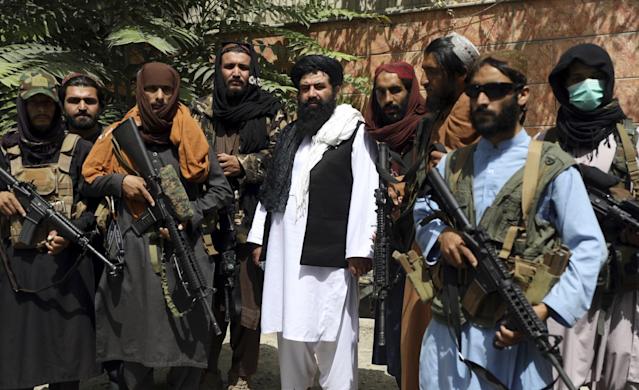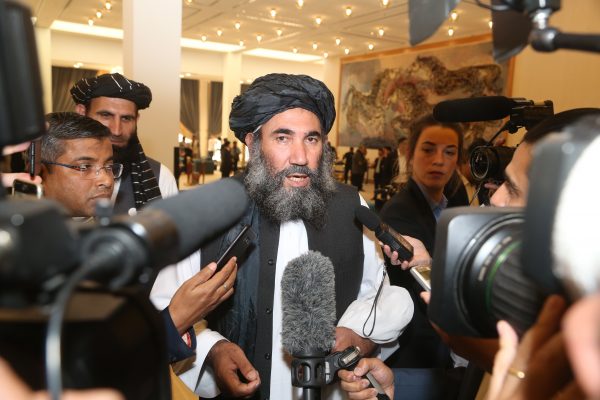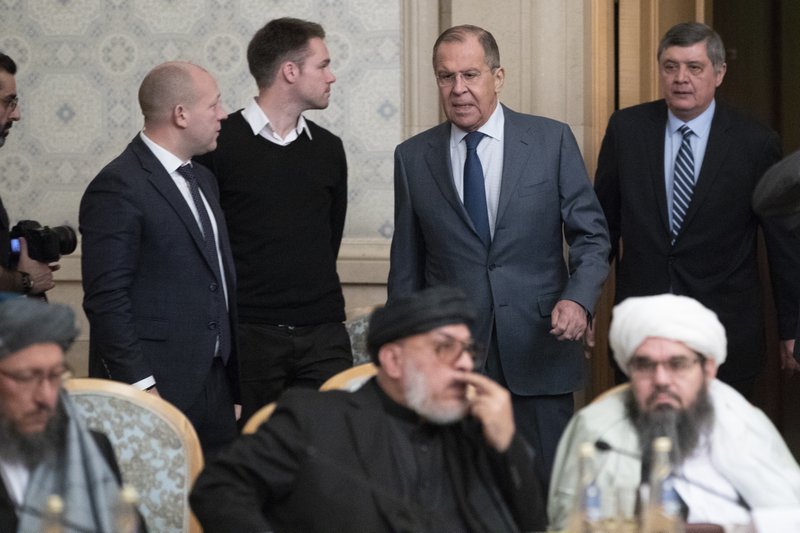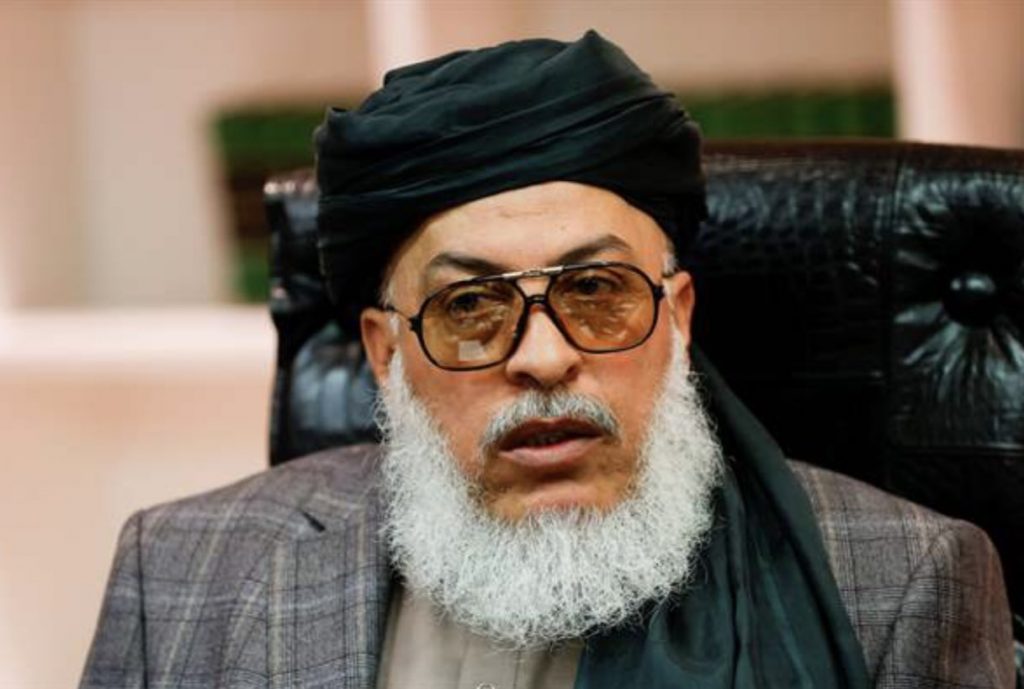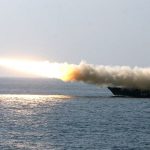The latest airport attack in Kabul could be seen as part of the campaign to legalize the Taliban in Afghanistan. After the terror attack, which killed over 100 people, the situation in Afghanistan resembles the one in Syria in the period when ISIS were building up their capacities. At the time, the Kremlin exploited the “imminent threat” of the Islamic State to portray Bashar al-Assad’s regime as the only force in the region capable of countering Islamic State terrorists. The Kremlin used this as an argument in the process of proving that the Assad regime must stay.
Currently, the Taliban need to get out of the fringe and seal a formal recognition of their legitimacy, which is inextricably linked with having to leave behind the brand of a terrorist organization. Thus, by actualizing the threat represented in Afghanistan by the IS-K allows the Taliban’s external allies to form on its base an anti-terrorist front to fight terrorism without deploying foreign military contingents on the ground. Such a format is seen as acceptable to all parties: the Taliban maintain a monopoly on military presence in the country, NATO Allies stay out of Afghanistan, while the Russians, through contacts with the Taliban, retain influence in the region without U.S. forces getting on their nerves.
Countering the IS-K threat is aimed to explain to the general public foreign political engagement with the Taliban and eventually remove the latter from the lists of terrorist organizations in a few countries.
In return, the Taliban can count on financial, economic, and technical assistance from governments that would already recognize them as Afghanistan’s legitimate authorities, if not for the legislative obstacle, as it is in Russia where the Taliban have been officially recognized as a terrorist organization.
Therefore, the invigorated activity by the IS-K is in the interests of both the Taliban and their foreign allies.
According to Daniel Garofalo, a jihadist terrorism analyst, IS-K views the Taliban as traitors and apostates, so clashes between the rivaling forces are likely to ensue once the Taliban leaders form an actual government. Thus, preconditions for the Kabul attack had long been broiling, but it was probably an outside actor who stimulated IS-K’s to go for it.
Meanwhile, Russia is seen as the main beneficiary of the processes that help cement the Taliban’s position in Afghanistan. If the effort succeeds, Moscow receives:
• New media opportunities to compromise the United States in the framework of the ongoing squabbles along the Moscow-Washington line;
• Access to Afghan resources under the Taliban regime;
• A stronger position in Central Asia – through influencing the Taliban and maintaining the threat of the Islamic “terrorism export” across the region;
• A chance to exploit the Taliban as a tool of coercive influence in the region; and
• An opportunity to compromise Joe Biden’s administration and, in the long run, to create conditions for the impeachment.
In 2014, Pakistani national Hafiz Saeed Khan was chosen to spearhead IS-K province as its first emir. Khan, a veteran Tehrik-e Taliban Pakistan (TTP) commander, brought along other prominent TTP members – including the group’s spokesman Sheikh Maqbool and many district chiefs – when he initially pledged allegiance to al-Baghdadi in October 2014. The appointment of Khan as IS-K’s first emir, and former Taliban commander Abdul Rauf Khadim as his deputy, further facilitated the group’s growth, utilizing long established recruitment networks in Afghanistan and Pakistan.
Some analysts believe IS-K may have links to the Haqqani network. Indeed, Shahab al-Muhajir, the ISIS leader, is reported to have been a former midlevel Haqqani commander before defecting.
In 2018, IS-K fighters were among those trained at the Abu Umar al-Shishani camps in Kunar province. A United Nations report this June reported that 8,000 to 10,000 militants from Central Asia, the North Caucasus, and Russia have relocated to Afghanistan. Among them were individuals affiliated with Al-Qaeda, the Taliban, and IS-K. Thus, Moscow had every opportunity to facilitate IS-K operations and plot terrorist attacks under the organization’s flag. It’s highly likely that the latest operation was carried out by the notorious “Russian bounties” scheme – the one Russia had worked out in Afghanistan, involving the Taliban targeting the US forces on the ground. At the same time, the Taliban are unaware of such contacts. The fact that the Russian foreign ministry had warned of a second attack at the Kabul Airport further testifies to the said scenario being implemented. Such precise intelligence could only be obtained from masterminds or immediate attackers. However, the Taliban had not been tipped about the impending attack. Since IS-K assumed responsibility, a warning attack could only be received if Moscow had sources deep in the organization or if it was in fact a joint stunt, co-sponsored by Russia and IS-K.

So it’s highly likely that in the short term, the situation in Afghanistan will feature revitalized activity of the IS-K both in the country and across the region. This will likely lead to Russia offering the Taliban some help in countering the IS-K by providing aerial support in line with the Syrian scenario. Russia’s participation in the operation will call into question the efficiency of US policy in the region. Moscow will be blaming Washington for empowering the IS-K during their presence in the country, while other NATO Allies were the main force actually fighting the Taliban. At the same time, the Kremlin will seek to renew attempts to pose as a “fighter against terrorism” and, thus, get out of the US and EU sanctions grip.


